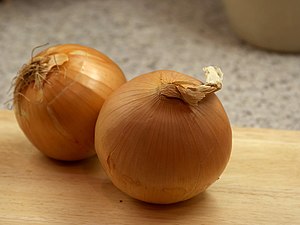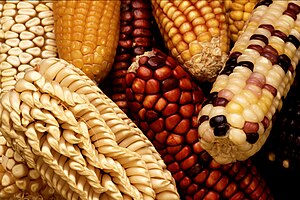When my vision blurs from typing, I head for my survival garden. I hope I survive the season.
Writing a book on Armageddon Medicine will change your view of the world. For instance, when I see a patch of grass, I’m overcome with the urge to plant more onions. In Ohio, you can’t plant tomatoes in April. I started early, and since they will survive a spring snow, I planted onions – in my flower beds, in my landscaping, in my garden – more onions than I’ll ever eat. The kids don’t like onions. The dogs don’t like onions. It’s up to me to consume them all, or perhaps barter for apples or wheat.
Farming is a lot of work – if I have to survive on what I can raise, I’m in trouble. Doctoring is definitely easier – at least less physically demanding.
I live in inner suburbia, and counting the usable land at my house and my office, I have perhaps half an acre. So far I haven’t planted onions in the front yard at my office – but I could. What a waste of energy to keep mowing the grass when I could be harvesting wheat.
Corn grows well in Ohio. It’s growing all over my yard. I’m not sure if it’s from critters who buried it in the winter or from my son throwing corn cobs in the lawn, which I don’t understand either (except that he’s a boy). The volunteer corn inspired me to plant rows of corn. I hate walking in the mud so planted rows in my lawn. My neighbor fears I’ve gone off the deep end. Eating corn is so much more satisfying than eating an onion (but what will I do with all those stalks???)
I call myself a YouTube gardener – and have learned all about planting corn and potatoes. Yummy carbs – “bad” now, but good for Armageddon. My children will starve if they have to live on tomatoes, peppers, and cukes. So now we’ve been mulching potatoes, no doubt spending more on straw than the potatoes will be worth.
Then there’s the stevia, an interesting plant that so far is more of a conversation piece than a useful sweetener. Can we survive without sugar? Doubtful. Maybe it’s not too late for sugar beets. Or maybe I should learn more about tapping a sugar maple. It’s all so much WORK! Can’t I just plant some Milk Duds and harvest them in a month or two?
In addition to vegetables, I’m reaping arthritis, tendonitis, and neuritis. No wonder women died at 50 a century ago. Their parts were all worn out.
I can’t be saving any money on this project. My kids tell me to just go buy groceries. I tell them the story of the Little Red Hen. If they won’t help me plant the onions, or harvest the onions, or wash the onions, or cook the onions, then I’m not sure I’ll share my onion rings.






I enjoyed your article and I feel your pain :). We are in a similar set up where we live in KY. Plants that I have had added to our location are blueberries, strawberries, most herbs (including stevia), coneflowers, feverfew, pyrethrum, and asparagus. I have the usual peppers, onions, tomatoes, cucumbers, beans (green, cow peas, lima), kale, chard, carrots, potatoes, corn, radishes, and lettuce. If you have a trellis or a span of fence available, a highly producing ‘green’ bean is the red noodle bean, I had unbelievable success with it. Don’t forget garlic, it can be planted in October and left to grow until early summer. Mulch your carrots and they too can over winter when planted in the fall. We are also lucky to have a fair amount of forage very near us that includes wild plums, blackberries, nuts, etc.
A grain I have recently discovered is Quinoa, since it is part of the grass family and very close to a weed it should grow well. Still experimenting with that one.
It’s hard work but have fun, the more you learn the better off you will be.
Hi Becky,
When I lived in Eastern Kentucky I mostly saw tobacco growing, which of course I’m not especially fond of, but at TEOTWAWKI could always be a good cash or barter crop.
You should check out a great YouTube Gardening Channel: “DrBonesPodcast” with Nurse Amy. Container and patio garden videos, cucumbers, corn, peppers with easy to follow instructions too. There is a video tour of the patio garden that is cool. Here’s the link:
http://www.youtube.com/drbonespodcast
A trick I learned last year and have had great success with was to use a stack of tires to grow potatoes in, which allows for a considerably large crop in a small area. Start with your seed potatoes planted in one tire, as the green leaves and shoots begin to grow out, simply add another tire and more soil, repeat as needed, by the end of the season, you will have a stack of tires packed full of potatoes. To harvest, just take it down.
Doc Cindy,
So happy to see you are trying your hand at gardening.
Perhaps you may want to try sprouting. It’s like having an indoors perpetual mini garden.
Growing your own food is very labor AND TIME intensive!
KF
Doc Cindy,
You are discovering the reality that most folks with a can of sealed survival seeds, a Chinese shovel, and no experience don’t know. Farming is hard work.
I tell folks that I don’t grow vegetables, I grow seeds that produce well in my soil and climate. Due to my busy career, it’s hard to farm. So here is what I have learned.
1. Cover the area with black plastic and heat kill all the seeds and weeds. Each year after use a green manure cover crop rotation.
2. Use a tractor to subsoil a deep till.
3. Use a tractor to rototill in composted cow manure – or green manure into nice beds – about 30 seconds for a 100-ft row if I go real slow. Need I say more?
4. Own high quality hand tools, fork, spade, hoop hoe, in case the tractor is offline.
5. Use dripworks.com drip system called t-tape – it wont clog and lasts years.
6. Only use straw harvested prior to going to seed for mulch, or use plastic.
7. reusable hard row-sized hoop covers for early start.
8. Focus on perennial crops.
9. “Simple well pump” for off grid water
10. — 4 varieties of squash that don’t cross-pollinate—-butternut squash, zucchini, hubbard, and hopi black is what I grow. Also storage carrots, lutz long keeper beets, perennial onions, garlic, beverlodge tom, heinz tom, longkeeper tom, dent corn, hopi blue corn, russian sunflower, winter oats, kentucky wonder beans, black turtle beans, chard, bok choi, potatoes.
11. Grow weeds around the property that others won’t see as food when you get plundered, like sun chokes, amaranth,
12. Cover carrots with bug mesh in the spring when you replant to grow out seed or you get crossed with wild carrots. If you plant around an ant hill, they will pollinate for you without crossing.
13. Stagger different corn crops by 2 or more weeks to prevent crossing pollen.
14. Trees and shrubs- apple- liberty,freedom,fuji,cameo, almonds, hazelnut, walnut, figs, cherries, pears, blueberry, raspberries.
15. For sugar you can’t beat 2-4 hives of local survivor bees. Don’t mail-order. Get them from local swarms that have done well wild in your area. Plan on a quart per frame 10-15 frames per hive when inexpertly managed. Be prepared to lose a few hives.
16. Use others to grow more variety off-site so you don’t cross pollinate, especially squash.
17. Hot-wire around the garden at 2-3 ft high with peanut butter every 15 feet. Stops deer and critters cold. As soon as they find the peanut butter they run away and never come back.
With this system and 1 acre in plants, I prep in 1/2 day, set up water in 2 hours, plant with an earthway seeder about 15 min per variety of plant, mulch 3 hours, and ignore until harvest, with a little fussing if I get bugs, slugs, deer (17), etc…
It is readily expandable to 50 acres due to automation and tons of stored seed. In an emergency instead of plastic post, I will spend more time on weeding and may have to actually use the cultivator attachment on the tractor.
Potatoes are a snap in a row, disk hiller piles dirt up on the growing plants (15 min) harvest with a subsoiler with a shoe “potato plow” and just pick them up into a mesh box. Hose off, dry, store in the root cellar.
Automated chickens ducks and rabbits are a whole other discussion. Sheep are my preferred large animal. Geese are next.
pa4ortho
Thank you, pa, for your extensive reply. It sounds like you’ve got a lot more done than I have – a tractor would make a huge difference. (But I do like my “claw.”)
There is no doubt that the hard life of people a hundred years ago contributed to early death and also pain and immobility in old age. But it is important to understand that statistics are tricky and when our average lifespan was 50, it was mostly because of so many deaths in childhood from diseases we now have forgotten. You often hear about how smallpox devastated the native Americans (which it did), but in that same 200-300 year time span that it killed so many native Americans, it killed even more of the immigrants. The only people who were immune to smallpox were those who had had it and survived. Every child born in almost every country was sooner or later tested by smallpox. They survived by luck and circumstance.
Just trying to make a point about how statistics must be looked at to be fully understood and how they often mislead us when we fail to understand them.
Yes, infection, trauma, and childbirth were major killers a century ago, and anyone who survived to age 50 had a good chance of living until 70 or more.
Even now, an 80-year-old has a better chance of living to 90 than a newborn does, statistically-speaking.